I, Priya am passionate about the environment and hence would like to share the knowledge of all elements that make this environment healthy and sustainable for all living beings.
Today, I would like to share the crucial role that pollinators play in maintaining the ecosystem balance. In this blog, I will explore the vital relationship between pollinators and the environment, and their impact on our world. I do believe that this blog will help all interested readers to take necessary steps to prevent our pollinators from extinction by following simple steps, also described in this blog. Thanks for taking out time and reading this.
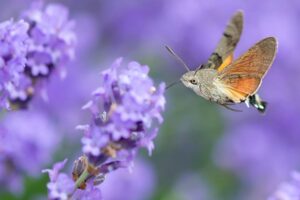
Pollinators need you, you need Pollinators!
Have you ever thought about what is an ecosystem and how important is to balance it?
An ecosystem in simple terms is a collection of plants, animals and other organisms sharing the same weather and landscape that interact and depend on each other. If any of these components is missing or not balanced, it results in the destruction of the ecosystem leading to global warming, water shortage, extinction of species, shortage of food, effect on nutrition, world economy, etc. These impact every living thing on the planet including us. Hence, there is a need to have a balance in this ecosystem to make it function in smooth way.
One such small component of ecosystems is Pollinators, which play a very crucial role in the ecosystem. Unfortunately, several species of these pollinators are at the brink of extinction; affecting the upper levels of the food pyramid and shaking the ecological balance (Balance of nature/Ecosystem) as well as the global economy. Let’s understand this better.
What are Pollinators?
A pollinator is anything that carries pollen from the male part of the plant (stamen) to the female part of the same or another flower (stigma) to fertilize and produce fruits, seeds and young plants.
Insects like bees, butterflies, moths, flies, beetles, wasps; birds, bats, and some small mammals are pollinators. They visit flowers to drink nectar and transport pollen grains as they fly from spot to spot.
When a pollen grain moves from the stamen(male part) of a flower to the stigma (female part), pollination happens. This is the first step in a process that produces seeds, fruits, and the next generation of plants. Besides the above pollinators carrying pollination, there is also self-pollination, wind and water pollination that move pollen within the flower and from bloom to bloom.
Three-fourths of the world’s flowering plants and about 35 percent of the world’s food crops depend on animal pollinators to reproduce. That means that 1 out of every three bites of food you eat is there because of pollinators. If we want to talk economy, pollinators add billions of dollars to the global economy, and honey bees alone contribute highest to these billion dollars in agricultural productivity. In addition to the food that we eat, pollinators support healthy ecosystems that clean the air, stabilize soils, protect from severe weather, and support other wildlife.
Now let’s look into the details of a few pollinators and their role in the ecosystem.
- Honey Bees:

Honey Bees Bees are one of the largest groups of pollinators and can be social or solitary animals. Honey bees and bumble bees, common eusocial pollinators, are generalists that visit many plant species to obtain nectar and pollen. Honey bees, the most important crop pollinator, pollinate over 100 different fruits and vegetables, while bumble bees, which vibrate as they pollinate, are more efficient pollinators for plants such as tomatoes.
- Bats: Bats are more efficient at facilitating the process of pollination because

Bats they can fly further than insect pollinators. Some species of bats (notably the leaf-nosed bats) can transport pollen up to 17 km between plants. Pollination by bats also makes the plant more resistant to disease and pests. Some plants are very dependent on bats so they have evolved specialized shapes and structures to accommodate bat pollinators. Most bats are insectivorous, but a few species rely entirely on fruits and seeds. These fruit-eating bats fly to plants to drink or feed on nectar from flowers.
- In doing so, pollens from the flower stick to the hairs on the bat’s body.
- The bat then flies to find other fruits and flowers, thereby transferring the pollen from the bat’s body to the new plant.
Pollination by bats is called Chiropterophily.
- Hummingbirds:

Hummingbirds Hummingbirds have amazingly adapted pollinators. They have long, slender bills and tube-like tongues that they use to drink nectar from brightly-colored flowers; this gives them the energy they need to fuel their high metabolism. As they move from plant to plant, they carry pollen. As they pollinate the native wildflowers in parks and the plants in your garden, hummingbirds add a splash of color to our landscapes.
The decline in the population of these pollinators is a major concern nowadays.
Without pollinators, we don’t eat, it’s simple as that. Reversing Pollinator Decline is a key to Feeding the Future!
It’s really sad to say that pollinators are in decline currently and we humans have contributed majorly to this decline besides climatic conditions. Pollinators that can’t find the right quantity or quality of food (nectar and pollen from blooming plants within flight range) don’t survive. Right now, there simply aren’t enough pollinator-friendly plantings to support pollinators.
Listing a few threats to these pollinator insects face
- Habitat loss: the area they can live in, shrinks as humans use land for farming and infrastructure expands.
- Climatic changes: Increased temperatures, CO2 and rapid changes in rainfall patterns or draughts can dramatically alter the biochemistry of plants and thus plant defense responses. This can have important implications in insect fertility, feeding rates, survival, population size, and dispersal.
- Threats on agricultural lands when we use pesticides and fertilizers to increase crop yields, these in turn impact the survival of pollinators.
This decline is going to severely impact our ecosystem in the following ways
- Food Supply:
 Fruit production would be strongly affected as most fruits require insects for pollination. The propagation of many vegetables would become problematic. Fruits and vegetables have moved to be nutritious food for the well-being of humans and many animals. Lack of this nutrition will lead to health issues in humans.
Fruit production would be strongly affected as most fruits require insects for pollination. The propagation of many vegetables would become problematic. Fruits and vegetables have moved to be nutritious food for the well-being of humans and many animals. Lack of this nutrition will lead to health issues in humans. - Impacts biodiversity of plants and animals: Reproduction of a few plants is possible only through pollinators, the decline in pollinators will lead to a decline in the pollinators dependent plants and hence the biodiversity of the plants. This will also lead to a decline in the no. of animals dependent on such plants. There is a direct correlation between pollinator diversity and plant diversity which is necessary for a healthy and thriving ecosystem. Without pollinators, the whole ecosystem can struggle.
- Impact on human life and health: Many flowering plants needing pollinators to reproduce are also used in Pharmaceutical companies for medicines. The decline in such flowers will impact the production of medicines and could lead to an increase in the number of diseases that would otherwise be cured with these medicines.
- Air cleanliness – Without plants, the air would become filled with carbon dioxide and devoid of oxygen which would lead to the demise of animals, including humans.
- Soil Erosion: A decline in the population of plants needing pollination will also lead to soil erosion due to a lack of soil cover.
What impacts of pollinators on the agricultural industry and food security and what can we do to prevent that?
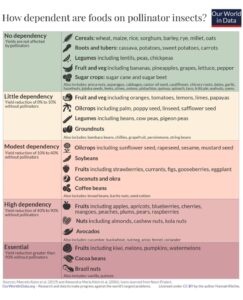
75% of crops depend on pollinators. The populations of many pollinator insects such as bees, wasps, and butterflies are in decline, which raises concerns about our future food security.
Pollinator-dependent crops tend to be important cash crops for farmers. In the future, our dependence on pollinators will probably grow over time as global diets diversify. As countries get richer they tend to shift away from staple crops towards fruits, vegetables, nuts and other nutrient-rich foods.
The declining population of pollinators will not only impact the amount of food but also impact the amount of income. This is especially true for low-income farmers. Many of the crops that are dependent on pollinators – cocoa, coffee, soybeans, palm oil, avocados – are cash crops that many lower-income countries rely on for trade. A steep decline in pollinators could hit some of the world’s poorest economies.
The irony is that achieving high crop yields often requires some agricultural inputs such as fertilizers or pesticides, and more farmland and these are the inputs that could potentially reduce pollinator populations. A decline in pollinators would in turn, reduce yields.
What’s the solution?
Moving forward we, therefore, need to focus on agricultural practices that can do both: maximize yields and preserve pollinator biodiversity at the same time. This needs a better understanding of what agricultural inputs affect pollinator populations, and whether there are particular management practices – such as specific timings or application rates of insecticides and fertilizers – that can limit the damage to insect populations. Balancing both is key for biodiversity on and off the farm: maximizing yields with pollinators present would save surrounding habitat from being turned into farmland, allowing wildlife and the economy to flourish.
As we now know that we human beings play a crucial role in preventing the decline of the pollinator population, let’s follow few simple steps to protect them and save our ecosystem :
- Plant Native Plants: Native plants are considered the best choice because of their abundance of nectar and pollen in addition to being low maintenance, generally pest-free, drought tolerant, and able to control erosion. They are good sources of food and shelter for wildlife and are naturally beautiful.
- Spread Awareness: Educate others about the importance of pollinators and share how you planted bees, butterflies, birds and other animals at home.
- Plant a continuous food supply: Choose pollinator-friendly plants that bloom during each of the three blooming periods — spring, summer and fall. Include winter, if you live in a warmer climate. It is especially important to plant flowers that bloom in early spring and late summer so bees have adequate food when emerging from and preparing for winter hibernation. Plant in groupings (clumps) of each plant species for a greater impact. For instance, Did you know dandelions are the first food for bees emerging in the spring? Leave them in your yard and feed the bees! Dandelion petals and leaves are also edible and can be used in salads.
- Limit or eliminate the use of pesticides: A healthy garden with the appropriate plant species and an abundance of pollinators will support natural beneficial insects—reducing the need for pest control.
- Include a diversity of plants: Different flower sizes, shapes and colors, as well as varying plant heights and growth habits, support a greater number and diversity of pollinators. Include a combination of native plant species, heirloom plants and herbs in your pollinator garden. Common herbs such as rosemary, oregano, basil, marjoram, and borage are excellent bee plants. Allow unharvested fruits and vegetables to bolt (go to flower) for added bee food.
- Install bat boxes: We learned how bats are also pollinators that need our help. Leave snags for habitat or install a bat box.
Finally, wrapping up this interesting topic on pollinators and their positive impact on our ecosystem. I request all to do our part and be responsible and mindful of all activities we do in our gardens (homes to these pollinators) and save them and have a healthy and sustainable ecosystem.

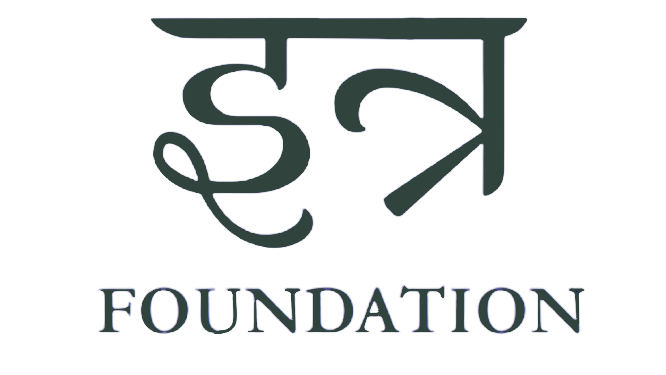
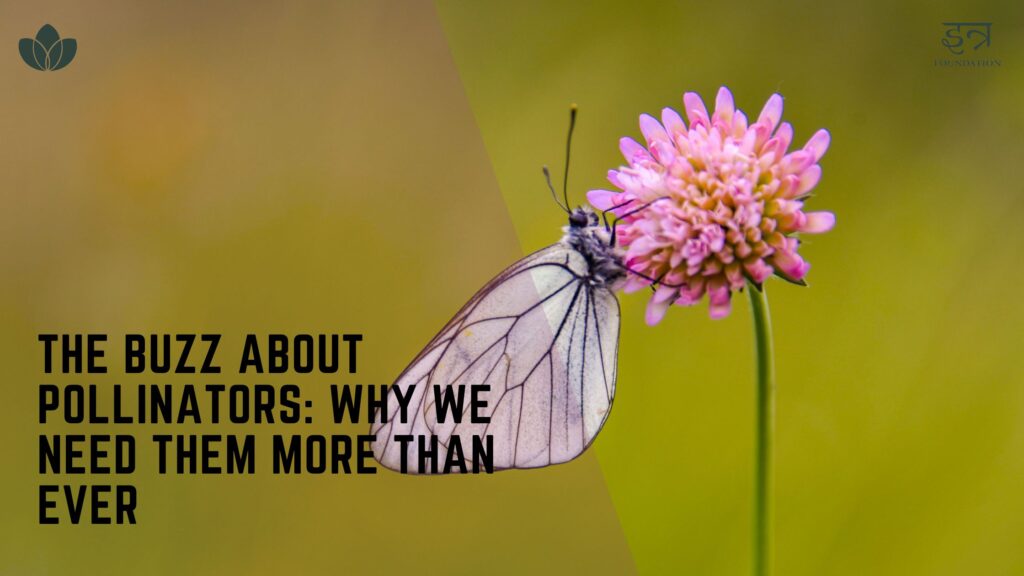
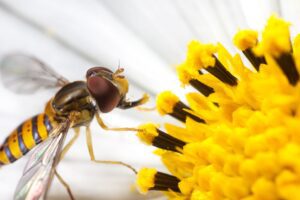
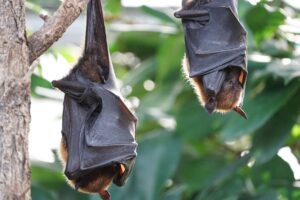
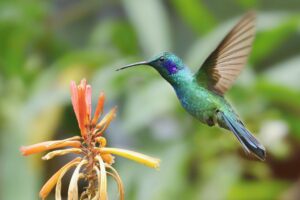
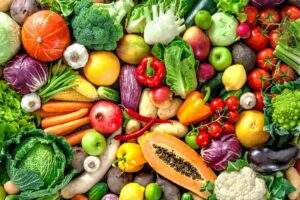 Fruit production would be strongly affected as most fruits require insects for pollination. The propagation of many vegetables would become problematic. Fruits and vegetables have moved to be nutritious food for the well-being of humans and many animals. Lack of this nutrition will lead to health issues in humans.
Fruit production would be strongly affected as most fruits require insects for pollination. The propagation of many vegetables would become problematic. Fruits and vegetables have moved to be nutritious food for the well-being of humans and many animals. Lack of this nutrition will lead to health issues in humans.